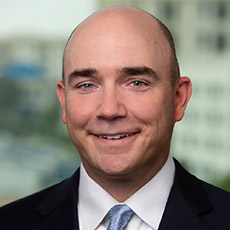Syncope
Syncope is defined as the transient, self limited loss of consciousness (LOC) and as a consequence the concomitant loss of voluntary muscle tone. It is commonly referred to as “the simple faint” by lay individuals. It can be more specifically defined as vasovagal, neurocardiogenic or neurally mediated. This is a very common phenomenon in children, with 15 percent experiencing an episode before the age of 18 years. It is much more common in females as compared to males (5:1). As with many pediatric diagnoses, patient history will give you the best clues to make the diagnosis.
History Individuals who experience an episode of vasovagal syncope will usually have a short prodrome of symptoms prior to actually losing consciousness. This may include palpitations, sweating, pallor and nausea. Many people may describe lightheadedness when they move from a sitting or lying to a standing position. During the episode, patients may shake and this can be construed as seizure-like activity. However, individuals with vasovagal syncope usually do not have incontinence which can help differentiate syncope from seizures or malignant arrhythmia. After an episode, patients tend to feel tired for an extended period of time, but they do not demonstrate a true post ictal phase, like seizure patients. They may continue to be nauseated and have pallor. If the syncope is associated with exercise, a key point in the history will be determining exertional from post exertional syncope. Post exertional syncope, even immediately after one stops, is much more likely to be benign than true LOC during the physical activity.
Physical exam Patients with vasovagal syncope often have a completely normal physical examination. They likely will have a normal resting blood pressure. Orthostatic pressures can be performed by having the individual lay in a quiet area for five to ten minutes. Then have him/her stand at the bedside and record the heart rate and blood pressure at one, three and five minutes. If the systolic blood pressure drops more than 15-20 mmHg, then that can be considered a positive test and give you another clue to the diagnosis.
Laboratory studies The first line test that should be considered, if further work up is warranted (i.e., multiple syncopal episodes), is the electrocardiogram (ECG). An ECG can be used as a screening tool to rule out many of the pathologic causes of syncope. Patients with hypertrophic cardiomyopathy will have an abnormal ECG 90-95 percent of the time. Other diagnoses to consider are arrhythmias related to ion channel defects, such as the congenital Long QT syndrome. However, immediately after syncope, the ECG may demonstrate a falsely prolonged corrected QT interval so don’t be surprised if repeat testing at a later date returns normal. Also, it is important to realize that pediatric ECGs have up to a 20 percent false positive rate, which can lead to much consternation on the part of the health care provider, as well as the patient and family. If exertional syncope is suspected, an echocariogram should be performed to evaluate not only for hypertrophic cardiomyopathy, but also for anomalous coronary arteries.
Therapy Most episodes of vasovagal syncope can be corrected with relatively simple measures. Patients should be instructed to increase their fluid intake. Generally, the normal teenage patient who passes out should increase intake to two liters or 64 ounces of noncaffeinated fluids from wake until 5 p.m. If basic measures fail to help, then medications can be used. Common choices may be volume expansion (fludrocortisone) or alpha agonist (midodrine) therapy. Some studies suggest selective serotonin reuptake inhibitors (SSRI) may be helpful. Referral to the pediatric cardiologist should be considered, if there is suspected underlying congenital heart disease or abnormal heart rhythms.
Get to know Matthew Dzurik, M.D.
 As medical director of the cardiac catheterization laboratory, I would like to introduce myself and some of the services that we provide. I have three outstanding partners that work with me to perform heart catheterizations on children and young adults of all ages. We continue to strive to stay at the forefront of our field and bring in the latest technology. On the arrhythmia front we are employing a new three dimensional mapping system that we use to aid in ablation procedures to treat abnormal heart rhythms. Recently my colleagues have initiated a program to place heart valves in patients through a vein in their leg, thus avoiding open heart surgery in certain situations. Overall we strive to provide the best possible environment and care for our patients and their family as we know how stressful an illness can be.
As medical director of the cardiac catheterization laboratory, I would like to introduce myself and some of the services that we provide. I have three outstanding partners that work with me to perform heart catheterizations on children and young adults of all ages. We continue to strive to stay at the forefront of our field and bring in the latest technology. On the arrhythmia front we are employing a new three dimensional mapping system that we use to aid in ablation procedures to treat abnormal heart rhythms. Recently my colleagues have initiated a program to place heart valves in patients through a vein in their leg, thus avoiding open heart surgery in certain situations. Overall we strive to provide the best possible environment and care for our patients and their family as we know how stressful an illness can be.
